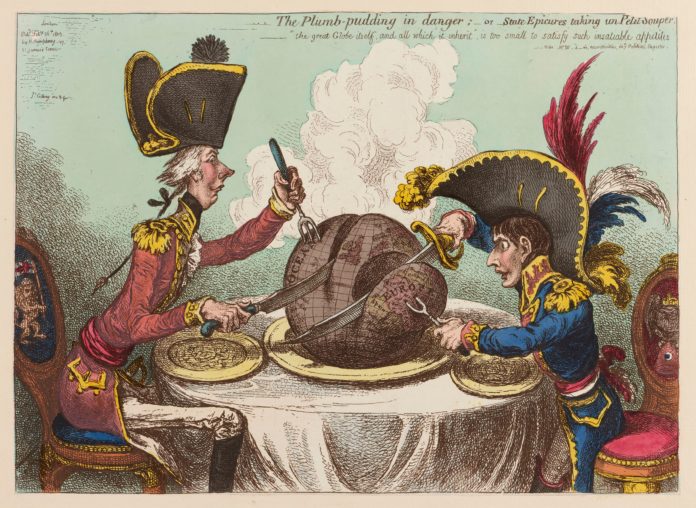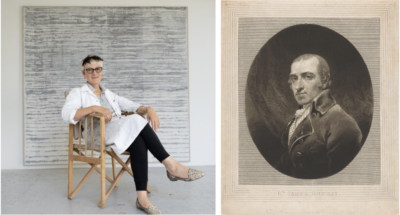
London – I had the pleasure of visiting Gainsborough’s House, the national centre for the study of Thomas Gainsborough in Suffolk, which hosted two very special exhibitions, which have opened on the 11 November 2023 and that will be running until 10 March 2024.
One was Rebecca Salter exhibition which is the first solo museum show in the UK dedicated to the work of the British abstract artist Rebecca Salter, President of the Royal Academy of Arts, London, and by association, President of Gainsborough’s House.
Here is a bit of history about Rebecca. Rebecca studied traditional Japanese woodblock printing in Kyoto for six years to become not only the first woman President of the Royal Academy, but also renowned painter whose work exquisitely combines Western and Eastern traditions.
 The exhibition, organised in collaboration with the writer and art critic Thomas Marks, presents her practice in a curated selection of large-scale paintings on display in the new Sudbury Gallery at Gainsborough’s House. Rooted in Japanese modes of thought and art making, the exhibition’s themes of Drawing to Painting, Repetition and Attention, Surface and Depth provide entry points into Salter’s careful, meditative mode of abstraction
The exhibition, organised in collaboration with the writer and art critic Thomas Marks, presents her practice in a curated selection of large-scale paintings on display in the new Sudbury Gallery at Gainsborough’s House. Rooted in Japanese modes of thought and art making, the exhibition’s themes of Drawing to Painting, Repetition and Attention, Surface and Depth provide entry points into Salter’s careful, meditative mode of abstraction
In the historic building at Gainsborough’s House, Rebecca Salter couples her ink drawings and watercolours, as well as one sculpture, with twelve works from the museum’s collection, by Gainsborough, Cedric Morris and Rembrandt, among others. Each pairing generates fresh insight into the historical work while opening up perspectives on Salter’s own experimental processes.
The other exhibition was James Gillray: Characters in Caricature which celebrates Georgian Britain’s funniest, most inventive and most famous graphic satirist in an exhibition curated by Tim Clayton, author of 2022’s definitive biography.
Known as the ‘father of the political cartoon’, James Gillray’s work has continued to influence his successors through time, from David Low (1891 – 1963) to Martin Rowson (b.1959). Featuring over one hundred works, the exhibition brings to life the master satirist and examines how Gillray (1756-1815), a contemporary of Thomas Gainsborough, exposed the most notorious scandals of his time by focusing on the artist’s principal characters, such household names as Emma Hamilton and Napoleon Bonaparte, as well as the British royal family, to which he returned again and again.
Gillray’s exceptional drawing, matched by his flair for clever dialogue and amusing titles, won him unprecedented fame. His work – largely disseminated by women publishers – parodies artists such as William Hogarth, Joshua Reynolds and Henry Fuseli. Gillray also borrowed and wittily redeployed celebrated passages from Shakespeare and Milton to send up politicians in an age when, as now, truth was scarce and public opinion of crucial importance.
Gainsborough’s House is the childhood home of, and now an international centre for, Thomas Gainsborough RA (1727–88). One of the great figures of British and global art history, he was renowned not only for his advancement of portraiture but also for being one of the founders of the British School of landscape painting. In 2019 Gainsborough’s House commenced a £10m building project, supported by The National Lottery Heritage Fund. On 21 November 2022, the museum re-opened to the public after a transformational refurbishment, which included introducing three new exhibition spaces to accompany the original Grade I listed building. The museum is now the largest gallery in Suffolk.
The permanent collection at Gainsborough’s House is the most comprehensive collection of Thomas Gainsborough’s artwork within a single setting anywhere in the world, encompassing paintings from across his whole career, including early portraits and landscapes painted in Suffolk during the 1750s, such as Wooded Landscape with Herdsman Seated (1746-1747), Peter Darnell Muilman, Charles Crockatt and William Keable in a Landscape (1750) and Mrs Mary Cobbold and Miss Cobbold with a Lamb and a Ewe (1752) to later works from his Bath and London periods of the 1760s, 70s and 80s. The collection of works on paper includes drawings by Gainsborough and his contemporaries, as well as prints by or after Gainsborough and other eighteenth-century artists, providing a valuable framework for interpreting Gainsborough’s art in its historical context.
Gainsborough’s House, 46 Gainsborough Street, Sudbury, Suffolk CO10 2EU


